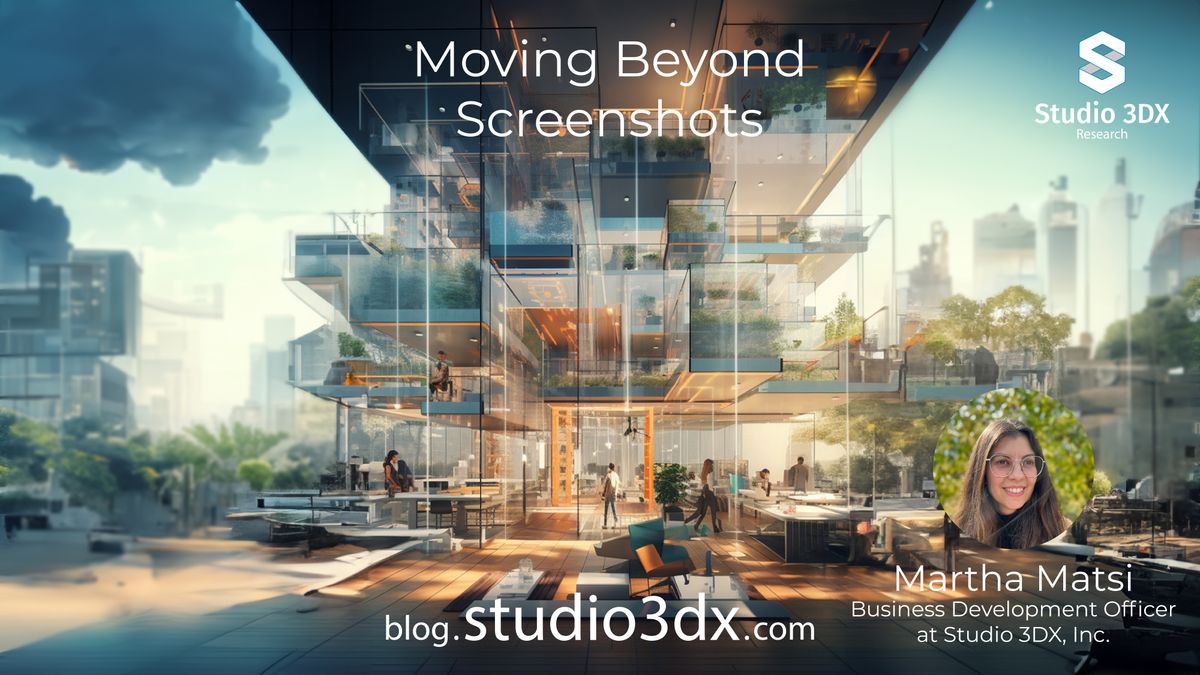Modernizing Architectural Collaboration: Moving Beyond Screenshots
In this article, we'll explore the limitations of both traditional but also modern ways of working together in architecture, in the search of the most efficient way of collaborating

"Architecture is no longer a solitary endeavor. In the modern world, collaboration among architects is essential, as it brings together diverse perspectives, expertise, and innovation, shaping a collective vision that transcends individual limitations." - Zaha Hadid
In the ever-changing world of architecture, collaboration is crucial for turning ideas into reality. Architects have traditionally used methods like physical drawings and blueprints to share their designs. But with the rise of digital technology, the industry has seen a big shift towards more efficient and dynamic collaboration tools. In this article, we'll explore the limitations of both traditional but also modern ways of working together in architecture, in the search of the most efficient way of collaborating.
The old-fashion way
While screenshots have long served as a quick and convenient way to share visual information, they fall short when it comes to architectural collaboration. They lack crucial context, frequently fail to capture the intricacies of design elements, and impede a comprehensive understanding of the project. Architects often find it difficult to convey complex spatial relationships, material textures, lighting effects, and other essential aspects of their designs through static screenshots.
Furthermore, screenshots are stagnant snapshots frozen in time, incapable of reflecting dynamic changes or updates to the design. As architectural projects progress, relying solely on screenshots can lead to confusion, misinterpretation, and ultimately, errors or discrepancies during the construction phase. It becomes increasingly challenging for stakeholders, including clients, contractors, and architects, to fully grasp the design intent and collaborate effectively.
The Need for Modernization
In the exciting era of digital innovation, architects and engineers are fortunate to have a wealth of advanced collaboration tools at their fingertips, offering the potential to revolutionize their work. However, it's important to acknowledge that with these new technologies come inherent risks and challenges. While embracing modern technologies opens doors to overcoming the limitations of traditional methods like screenshots, it's crucial to navigate the landscape mindfully and be aware of the complexities that accompany these tools. By striking a balance between embracing innovation and understanding the potential pitfalls, architects and engineers can truly unlock the boundless possibilities for seamless collaboration in their field.
So which are the more modern ways of collaboration and what are their main limitations?
Virtual Meetings
While online platforms like Zoom and Microsoft Teams offer great opportunities for virtual meetings in the architectural and engineering fields, there can be some difficulties that architects and engineers may encounter.
In traditional meetings, architects and engineers can easily gather around a physical drawing or blueprint to discuss and collaborate. Translating this collaborative experience to the virtual realm can be challenging, as it may involve sharing screens, navigating through documents, and maintaining focus on the discussion. Having no visual interaction of the 3D model can limit the ability to quickly iterate, make adjustments, or collectively problem-solve in real-time.
Cloud-based File Sharing
Platforms such as Dropbox or Google Drive provide architects with a centralized space to store and share project files. Storing project files on cloud servers, however, introduces potential security risks. Architects must ensure they choose reputable and secure cloud storage providers to protect sensitive design information from unauthorized access or data breaches.
Large architectural files, such as complex 3D models or high-resolution renderings, can also take longer to upload and download from the cloud. Slow transfer speeds can lead to delays in file access and hinder efficient collaboration, especially when working on time-sensitive projects.
Cloud-based File Sharing may also impose version control challenges when architects or their team's work on the same project simultaneously. It is essential to have robust file naming conventions, clear communication, and a well-defined workflow to avoid confusion or accidental overwriting of files.
Building Information Modeling (BIM) Software
BIM tools like Autodesk Revit or ArchiCAD enable architects, engineers, and other stakeholders to collaborate on a shared 3D model. However by choosing one of these tools to collaborate would require that all stakeholders use the same software platform or compatible file formats. If team members are using different software or versions, it can lead to compatibility issues, difficulty in file exchange, or loss of data and model fidelity.
BIM software like these can also be resource-intensive, requiring powerful hardware and sufficient computer processing capabilities. Working with large-scale projects or complex models may strain system performance, leading to slower processing times, lag, or crashes.
BIM models can be particularly substantial in size due to the inclusion of detailed information and rich visual data. Sharing these large files can present challenges, especially when collaborating with remote team members with limited bandwidth or storage capacities. Uploading, downloading, and transferring large BIM files can be time-consuming and may require specialized file sharing platforms.
VR (Virtual Reality) and AR (Augmented Reality) technologies
Although VR and AR technologies offer exciting opportunities for architects to collaborate and review their 3D designs could be quite costly to implement, requiring specialized hardware, software, and equipment. Access to high-quality VR headsets or AR devices may be limited, especially for smaller architectural firms or projects with budget constraints. This can hinder widespread adoption and accessibility for all team members involved in the collaboration process.
In addition while VR and AR technologies could allow architects to create immersive experiences for stakeholders, enabling them to virtually walk through and interact with designs, the fidelity of visual representation may not always match the level of detail and accuracy required for architectural design. Limitations in resolution, texture mapping, or lighting can affect the perception and interpretation of design elements, potentially leading to miscommunication or misunderstanding among collaborators.
VR systems also often require a dedicated physical space or setup for users to move around freely and interact with the virtual environment. This can be challenging in small office settings or remote work environments, limiting the practicality and feasibility of implementing VR collaboration on a large scale.
What's next?
The field of architecture requires a modern and efficient approach to collaboration that overcomes the limitations of traditional methods and embraces the potential of digital technologies. While virtual meetings, cloud-based file sharing, BIM software, and VR/AR technologies offer promising solutions, each approach has its own set of limitations that need to be addressed.
To truly transform the collaborative process in architecture, there is a pressing need for a web-based collaboration tool that seamlessly integrates with the workflows of architects, engineers, and construction professionals. Such a tool should prioritize 3D designs as the core of the experience, leveraging technology to optimize large models and ensure fast loading times without compromising their quality.
In addition, the tool should provide essential review tools such as commenting, sectioning, and measuring, enabling stakeholders to provide precise feedback and engage in detailed discussions. The inclusion of video, audio, and screen sharing capabilities would facilitate real-time communication, enhancing the collaborative experience further.
Moreover, supporting a vast majority of 3D file formats is essential to ensure compatibility and ease of use for all stakeholders involved. This eliminates the need for software or version dependencies, promoting seamless collaboration across different teams and organizations.
By embracing a comprehensive web-based collaboration tool, architects, engineers, and construction professionals can overcome the challenges posed by traditional methods and existing digital solutions. Seamless collaboration facilitated by optimized 3D designs, comprehensive review tools, and real-time communication capabilities will lead to increased efficiency, reduced errors, and enhanced project outcomes.
The future of architecture lies in the adoption of innovative technologies that empower professionals to collaborate seamlessly and unleash their creative potential. With the right web-based collaboration tool, the industry can revolutionize the way architectural projects are conceptualized, developed, and executed, leading to remarkable advancements and transformations in the built environment.
What are your thoughts on the subject? Contact me with your thoughts at martha(at)studio3dx.com and through Linkedin.
